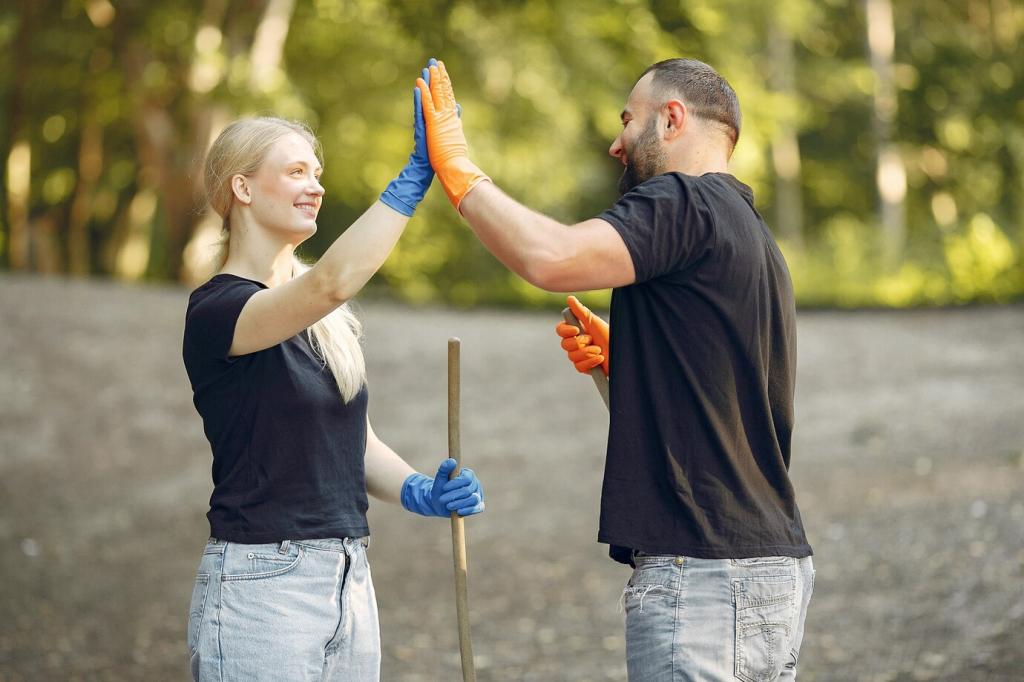
Natural Wood Furniture Cleaning Tips: Keep the Grain Glowing
Chosen theme: Natural Wood Furniture Cleaning Tips. Welcome to a friendly, practical guide for preserving the warmth of real wood. Learn gentle routines, smart fixes, and mindful habits that keep your furniture beautiful for years. Share your questions and subscribe for fresh, wood-wise inspiration.
Know Your Finish Before You Clean

Simple ways to identify a finish safely
Begin with the maker’s label or care card, if available, then trust your senses: sealed surfaces often feel slick and resist water, while oil or wax finishes feel warm and slightly matte. Avoid harsh solvent tests and instead perform only gentle, inconspicuous checks.

Why the finish changes your cleaning plan
Sealed finishes tolerate a barely damp cloth and mild, pH-neutral soap, while oil or wax finishes prefer less moisture and more buffing. Using the wrong approach can cause haze, streaks, or swelling. Match technique to finish, and your cleaning becomes quick, calm, and effective.

Tell us about your piece
A reader saved a thrifted walnut sideboard by first learning its oil finish, then cleaning softly and re-oiling. The result looked quietly luxurious. Share your furniture’s story, finish guesses, and photos so others can learn from your experience and celebrate your success.



Safe Cleaning: Water, Soap, and Ratios
Add a few drops of pH-neutral dish soap or castile soap to a bowl of warm water, just enough to soften surface oils without sudsy buildup. Swirl rather than whip. Always test in a hidden spot, looking for haze, swelling, or color change before cleaning larger areas.
Wring a microfiber cloth until barely damp, then wipe small sections with the grain. Immediately follow with a dry, clean cloth to remove moisture and polish lightly. Refresh your water frequently. Comment below if the two-cloth approach reduced streaks on your table or cabinet.
Skip vinegar, ammonia, bleach, strong degreasers, and steam cleaners, which can cloud finishes or lift them entirely. Essential oils may smell lovely but can leave slick residues. Gentle, diluted soap and careful drying protect both the film finish and the living fibers beneath.

Stain and Ring Rescue
Lifting white heat rings with low, steady warmth
White rings usually mean trapped moisture within the finish. Aim a hair dryer on low, moving constantly, or use a warm iron over a cotton cloth for brief pulses. Check often, stop at improvement, and let the finish cool before buffing softly with a clean microfiber cloth.
Reducing watermarks and cloudy haze carefully
For light haze on sealed finishes, a tiny dab of non-gel white toothpaste mixed with baking soda can gently polish—test first. Some swear by a thin smear of mayonnaise overnight to rehydrate dryness. If residue builds, a cautious wipe with mineral spirits may help before waxing.
Tackling ink and dye transfers
Start with mild soap and water on sealed finishes. If needed, touch a cotton swab dipped in rubbing alcohol to the mark, dabbing quickly, then dry immediately. Avoid alcohol on oil or wax finishes. When stains persist, consult a pro to prevent unnecessary finish loss.
Polish, Oil, or Wax?
On appropriate finishes, apply a pea-sized amount of quality beeswax or beeswax-carnauba blend with a soft cloth, working with the grain. Allow a light haze, then buff thoroughly after twenty to thirty minutes. Thin coats protect better than heavy ones and reduce smearing or streaky residue.
Polish, Oil, or Wax?
Use pure tung oil or polymerized linseed oil only on bare wood or previously oil-finished surfaces. Flood lightly, wait a few minutes, then wipe completely dry. Cure days, not hours, with good ventilation. Dispose of oily rags safely to prevent spontaneous combustion—a real, avoidable hazard.
Polish, Oil, or Wax?
Many aerosol polishes rely on silicone, which can attract dust and complicate future refinishing by causing fisheyes. If build-up forms, lightly wipe with mineral spirits, then dry and re-wax if needed. Share your favorite silicone-free products so others can shop smarter and safer.
Shield from UV and heat
Sunlight fades color and dries finishes. Use curtains, UV film, or blinds, rotate table leaves, and keep pieces away from radiators and vents. Avoid plastic covers that trap heat and imprint patterns. Heat-resistant mats protect finishes without sacrificing the wood’s natural, welcoming feel.
Keep humidity steady and sane
Aim for forty to fifty-five percent relative humidity to minimize cracking and warping. Use a humidifier in winter, a dehumidifier in sticky summers, and monitor with a hygrometer. Slow, steady changes are safest for wood. Comment with your region and what balance works for you.
Everyday habits that prevent cleaning emergencies
Use coasters and placemats, wipe spills immediately, lift instead of dragging, and add felt pads under decor. Keep pens on trays and nail polish far away. A five-minute weekly dust routine beats frantic deep cleans. Subscribe for a printable checklist that keeps good habits effortless.
